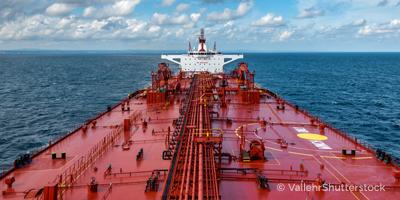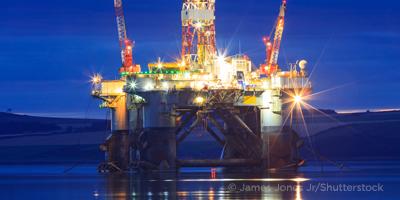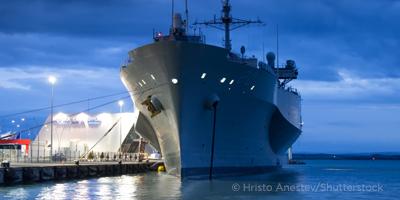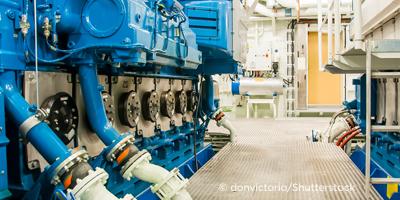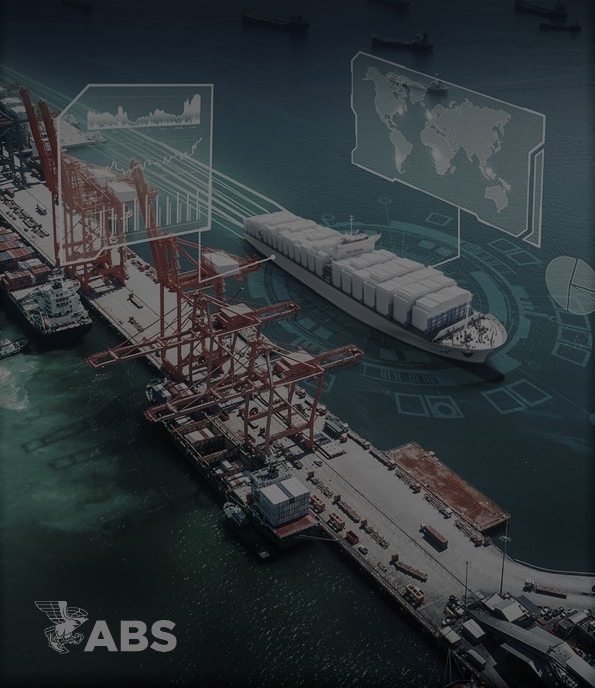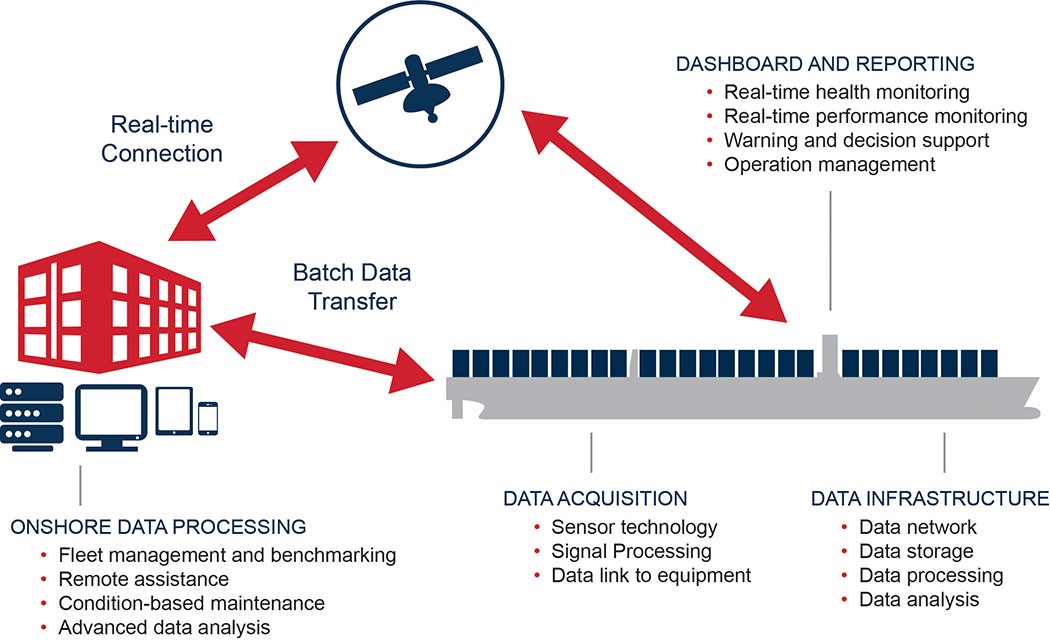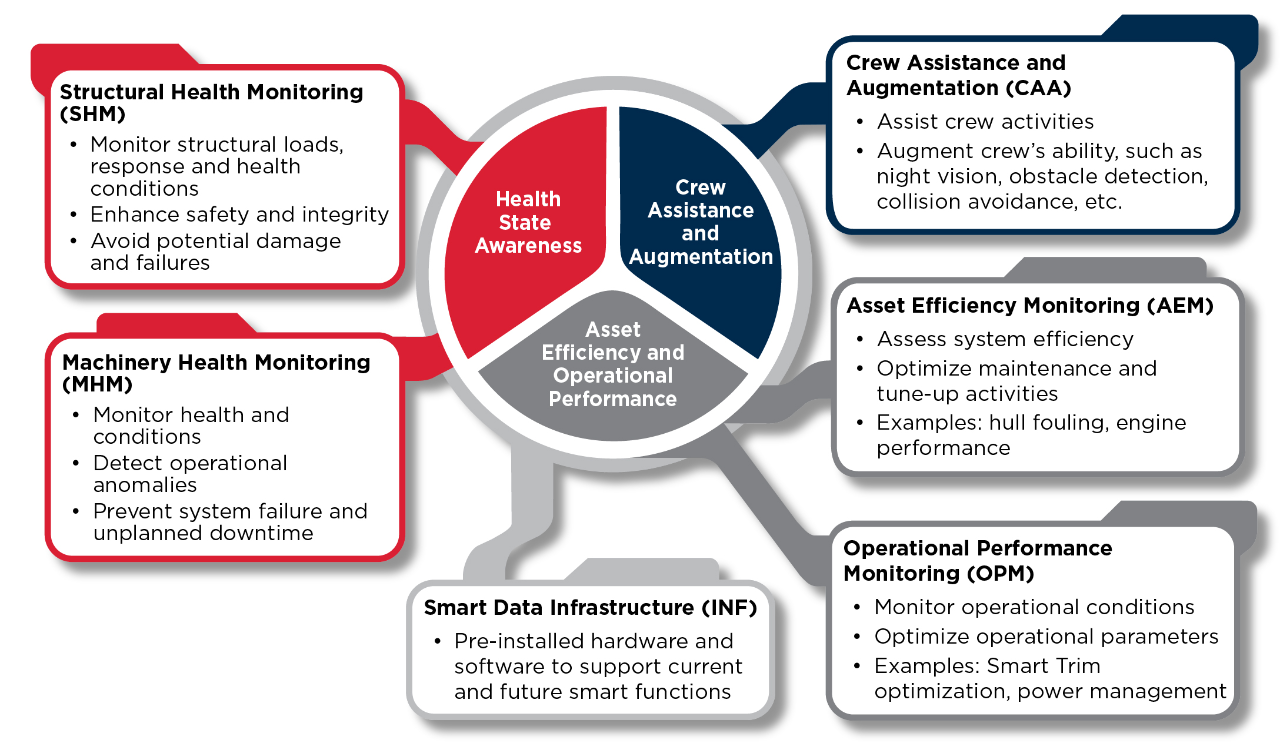Given the rapid rise of digital technologies, connectivity and data processing, smart technology is becoming increasingly more common in the marine and offshore industries.
Smart technology helps to effectively collect, manage and process operational data, as well as perform advanced data analytics, enabling data-driven decision making. These smart functions help owners and operators more proactively manage the health and performance state of their assets as well as assist the crew in performing their day-to-day work and reporting activities.
To be effective, smart functions are enabled via a data infrastructure supported by robust software integrity and cyber security, ensuring the aggregate data collected from sensors and other sources is accurate and safeguarded.
Smart technology will be a key factor for industry sustainability moving forward. Future adoption of smart technology will coincide with quickly changing environmental regulations. Advanced monitoring and data analysis, as well as asset performance optimization, will be crucial for environmental compliance moving forward. As we approach 2030 and beyond, smart technologies and how a vessel’s data are utilized to optimize performance are going to be critical to meet the reduced carbon requirements being developed by the IMO.
ABS has issued the Guide for Smart Functions for Marine Vessels and Offshore Units (Smart Guide) and Guidance Notes on Smart Function Implementation to help guide marine and offshore applications of smart technology. By implementing smart monitoring, vessel and operational data can be leveraged to assist and augment day-to-day operations, forming the foundation for an autonomous operation. This shifts the burden from crews onboard reporting anomalies, to integrated systems that can assist to identify and help suggest solutions to problems, moving decisions from ship to shore.
The ABS Smart Guide introduces a unique class approach with the marine and offshore industries' first set of notations for smart technology. This guide applies a risk-informed set of easy-to-apply prescriptive requirements for engineering review and survey of smart technology applications. The Smart Guide is also a logical goal-based approach to adding smart functionality that is aligned with your company’s business objectives—laying the basis for improved vessel OPEX as well as a more condition-based class approach.
The ABS Smart Guide offers several optional Class notations to recognize smart functions that provide health state awareness, crew assistance, augmentation, asset efficiency and operational performance. Vendors of smart functions would be eligible to receive a Product Design Assessment (PDA) certificate under the ABS Type Approval Program for all the smart functions listed in the figure.
The difference between machinery health monitoring (MHM) and structural health monitoring (SHM), as smart functions and traditional CM lies mainly in SHM/MHM’s use of operational data trending and the application of one or both of the following model-based analytical methods:
1. Machine/system diagnostics/prognostics using physics-based models and techniques.
2. Machine/system diagnostics/prognostics using historical data-driven models and data analytics such as machine learning algorithms and similar techniques.
The ABS Smart Guide supports data infrastructure assurance by setting risk-based requirements, enabling health and performance monitoring, as well as augmenting vessel operations leading to more informed decisions in support of fast-moving environmental requirements. The guidance sets an actionable goal-based framework for owners, operators and equipment manufacturers to take smart steps today in preparation for an environmentally sustainable future.









